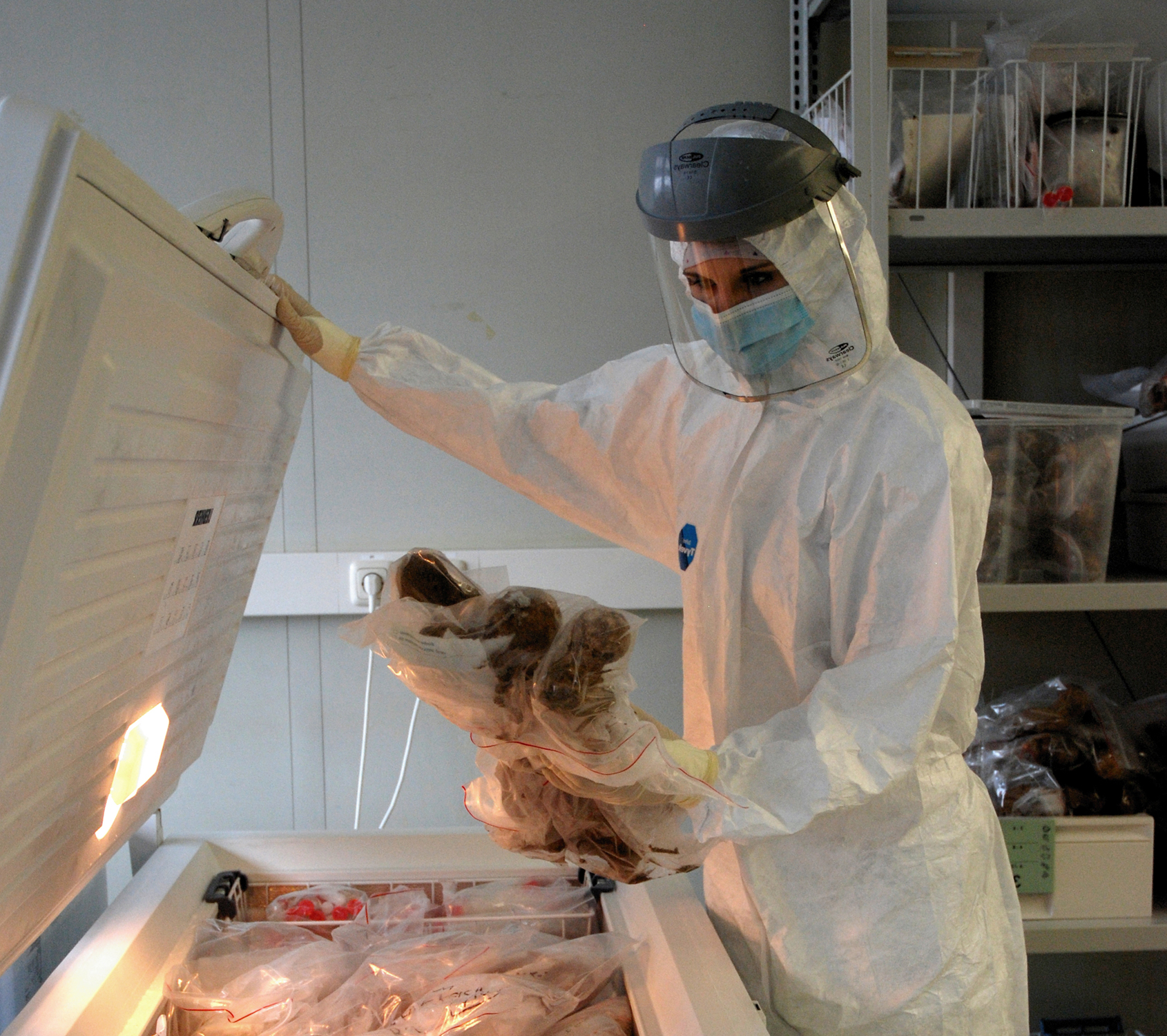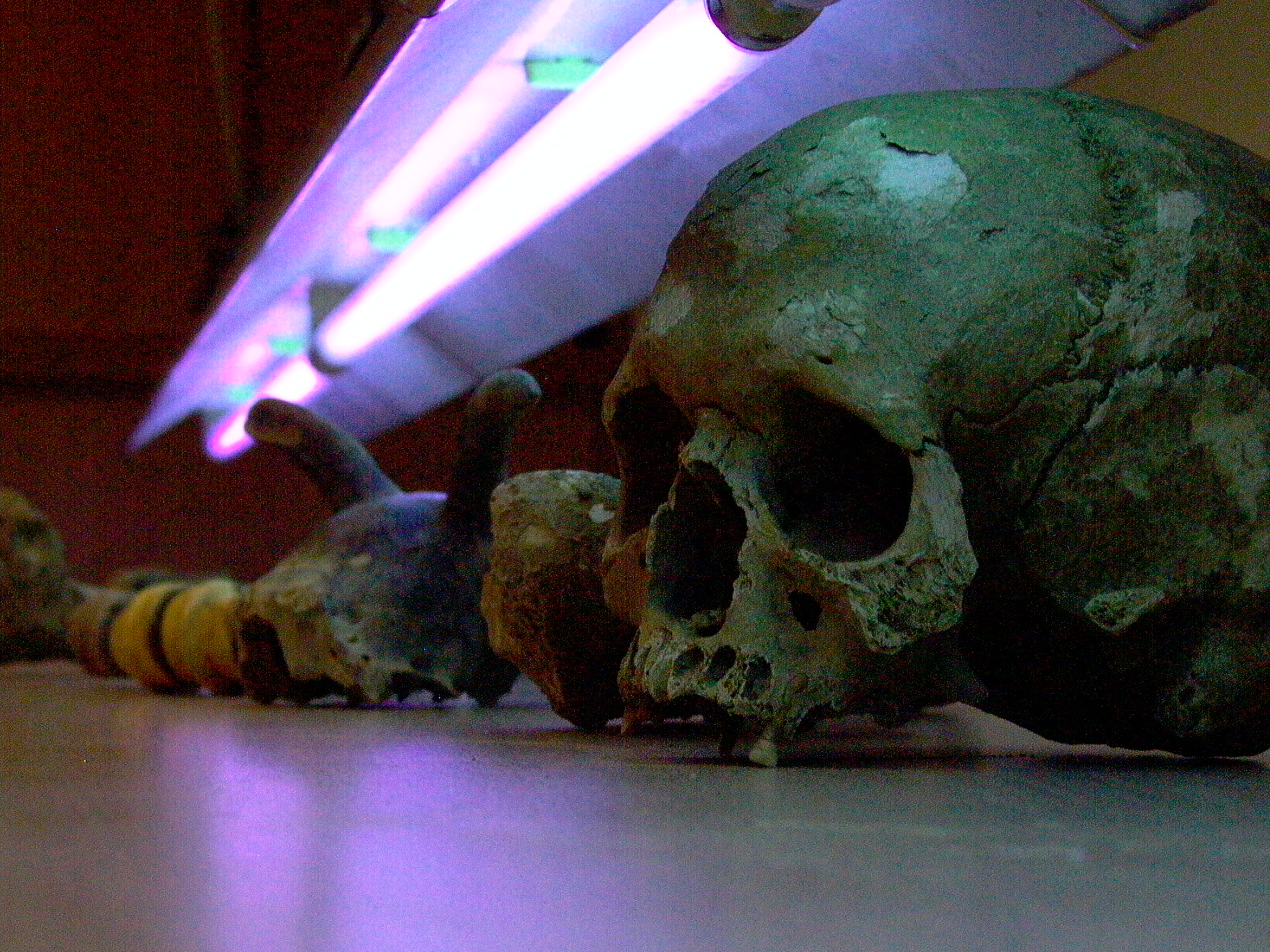Hunter-gatherers of the Ice Age are not the ancestors of the first sedentary tillers
03.09.2009
Europe's first farmers replaced their Stone-Age hunter-gatherer forerunners: Analysis of ancient DNA from skeletons suggests that Europe's first farmers were not the descendants of the people who settled the area after the retreat of the ice sheets. Instead, the early farmers probably migrated into major areas of central and eastern Europe about 7,500 years ago, bringing domesticated plants and animals with them, says Barbara Bramanti from Mainz University in Germany and colleagues. The researchers analyzed DNA from hunter-gatherer and early farmer burials, and compared those to each other and to the DNA of modern Europeans. They conclude that there is little evidence of a direct genetic link between the hunter-gatherers and the early farmers, and 82% of the types of mtDNA found in the hunter-gatherers are relatively rare in central Europeans today.
For more than a century archaeologists, anthropologists, linguists, and more recently, geneticists have argued about who were the ancestors of Europeans living today. We know that people lived in Europe before and after the last big ice age and managed to survive by hunting and gathering. We also know that farming spread into Europe from the Near East over the last 9,000 years, thereby increasing the amount of food that can be produced by as much as 100-fold. But the extent to which modern Europeans are descended from either of those two groups has eluded scientists despite many attempts to answer this question.
Now, a team from Johannes Gutenberg University Mainz together with researchers from University College London and Cambridge have found that the first farmers in central and northern Europe could not have been the descendents of the hunter-gatherers that came before them. But what is even more surprising, they also found that modern Europeans could not be solely the descendents of the hunter-gatherers or the first farmers, and are unlikely to be a mixture of just those two groups. "This is really odd," says Professor Mark Thomas, population geneticist at University College London and co-author on the study. "For more than a century the debate has centered around how much hunter-gatherer, how much early farmer? But now that: For the first time, we are able to look directly at the genes of these Stone Age Europeans. And what we find is that some DNA types just aren't there, despite being common in Europeans today."
Humans arrived in Europe 45,000 years ago and replaced the Neandertals. From that period on, European hunter-gatherers experienced lots of climatic changes including the last Ice Age. After the end of the Ice Age some 11,000 years ago, the hunter-gatherer lifestyle survived for a couple of thousand years but then was gradually replaced by agriculture. The question is whether this change in lifestyle from hunter-gatherer to farmer was brought to Europe by new people or whether only the idea of farming spread. The new results from the Mainz team seem to solve much of this long-standing debate. "Our analysis shows that there is no direct continuity between hunter-gatherers and farmers in Central Europe," says Professor Dr. Joachim Burger from Mainz University. "As the hunter-gatherers were there first, the farmers must have immigrated into the area." The study identifies the Carpathian Basin as the origin for early Central European farmers. "It seems that farmers of the Linearbandkeramik culture immigrated from there 7,500 years ago into Central Europe, initially without mixing with local hunter gatherers." Barbara Bramanti, first author of the study adds: "This is surprising, because there were cultural contacts between the locals and the immigrants, but, it appears, no genetic exchange of women."
The new study confirms what Joachim Burger's team showed in 2005, i.e., that the first farmers were not the direct ancestors of the modern European. Burger says: "We are still searching for those remaining components of modern European ancestry. Hunter-gatherers and early farmers alone are not enough. But new ancient DNA data from later periods in European prehistory may shed light on this in the future."
PHOTO GALLERY




